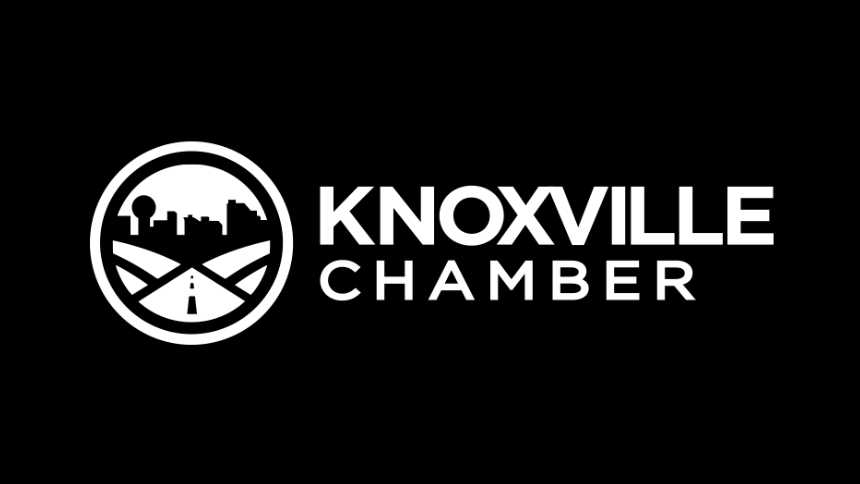
Knoxville Chamber releases “Path to Prosperity” five-year strategic plan
After hundreds of conversations over the past year with stakeholders to ascertain their needs and aspirations for the community broadly defined, the Knoxville Chamber has announced its new five-year strategic vision titled the “Path to Prosperity.”
Mike Odom, President and Chief Executive Officer (CEO), says the plan has a number of components, all designed to focus on and address the feedback he received during one-on-one meetings around Knoxville, Knox County and the larger metropolitan region.
“We are getting back to our core mission . . . driving regional economic prosperity,” he explains. “That’s our filter.” As such, there is an enhanced emphasis being placed on supporting existing businesses and start-ups while not turning its back on areas the Chamber is best known for – workforce development and recruitment of new businesses and headquarters.
“We have a number of headquarters operations here,” Odom says. “They are just 10 or 15 people. We want to help them grow to several hundred or even larger.”
That statement captures the core message that has clearly come through to me during a number of conversations with the Chamber CEO since he arrived nearly a year ago from Round Rock, TX. It’s about ensuring that a community that birthed such iconic brands as Pilot/Flying J, Clayton Homes and Radio Systems/PetSafe has the business friendly and supportive environment to help other enterprises achieve similar levels of success.
“Somewhere along the road, we abandoned that strategy,” Odom says.
As clearly stated in the plan documents, the goal of “Path to Prosperity” is to “create a vibrant, innovative economic ecosystem for the entire Knoxville region that will ensure that we are considering the realities of today while contemplating the aspirations of tomorrow.” The emphasis on the local economic ecosystem is clearly intentional and reflects Odom’s synthesis of the input from the diverse mix of stakeholders with whom he talked.
More important, however, is the metaphor he uses to describe the concept.
“The plan is designed to be a perpetual flywheel,” Odom says, one that leverages the region’s significant assets while also ensuring that the ecosystem is fully supporting existing businesses – ensuring they not only remain here but also grow here – as well as entrepreneurs with start-ups or new venture aspirations in a variety of ways. For all businesses to succeed, they need a vibrant business climate, robust infrastructure, and well-trained and available talent. Each of those areas supports the growth of new or established businesses while also contributing to the region’s ability to recruit new, complementary companies that further fuel a stronger economy.
It is clearly the self-perpetuating flywheel.
For Odom, the ecosystem is the enabling piece. Without it, another key component of the “Path to Prosperity” cannot succeed as it should. That part involves what he calls the five strategic platforms – areas where the region has unique strengths on which it can grow its economy.
To underscore the interdependency of the ecosystem and the strategic platforms, Odom cited as one example a local autonomous vehicle company that might ask the Chamber to help try to recruit a primary supplier from the West Coast to the region. Later, the two companies might want to launch a new product, but need help with getting the necessary approvals from the city and others for a pilot test. The Chamber would step-up. Perhaps the new venture needs additional talent, and the Chamber could help with introductions to the appropriate educational enterprise. Maybe there are opportunities for an entrepreneur to start a new company.
You get the picture. Odom sees the Chamber as clearly being very responsive to needs that can drive further economic growth.
Autonomous vehicles fall within one of the strategic platforms. The five and representative but not all-inclusive examples in each are:
- Communication – artificial intelligence, augmented and virtual reality, content production and creative services, data science, broadband, Internet of Things, social media, and mobile services.
- Health – animal care, botanical therapeutics, health informatics, medical devices, medical research, pharmaceuticals, and prosthetics.
- Movement – aerospace, alternative transportation, autonomous/electric vehicles, drones, logistics, on-demand delivery services, transportation grid innovation, and watercraft.
- Power – alternative energy, battery research and development, fusion, high-performance computing, nanotechnology, nuclear power, power grid innovation, and wireless power transfer.
- Security – animal safety, connected device protection, cybersecurity, data/privacy protection, food safety, law enforcement products and services, and violence-prevention innovation.
Odom emphasizes that these examples should not be construed to suggest that the Chamber is uninterested in helping businesses in other sectors. Rather, he sees these as places where the region can capitalize on emerging areas, grow the local economy, draw attention to the Greater Knoxville area as a thriving place for businesses, and create an environment that helps all businesses.
“If we have the right economic ecosystem, everyone will benefit,” he says.
He also stressed there are six components of the strategic vision that the Chamber is committed to accomplishing over the five years. They consist of developing: (1) a regional workforce development strategy; (2) a regional talent retention and attraction strategy; (3) a community infrastructure strategy; (4) a regional access to capital strategy; (5) a City of Knoxville/Knox County brand campaign; and (6) the local business-focused economic development strategy described in this article.
During our most recent conversation, also Odom touched on conversations that he had with economic development leaders in neighboring communities. Noting that economies transcend geographical boundaries, he cited examples of how he and the Knoxville Chamber team had already been collaborating with colleagues in other counties on programs and projects.
“We will work with our regional partners whenever they want to work with us,” Odom explained. “We’re not competing with them. We are competing against poverty, illiteracy, homelessness and addiction. Good jobs with good benefits are what we’re trying to achieve.”
Like what you've read?
Forward to a friend!

